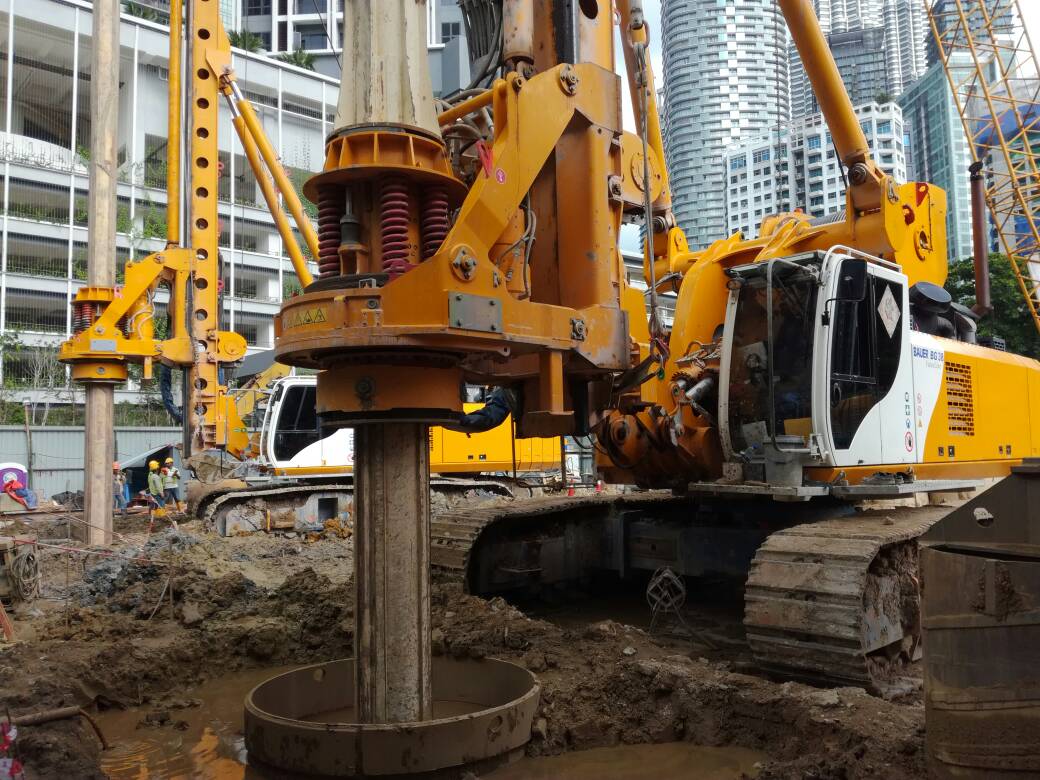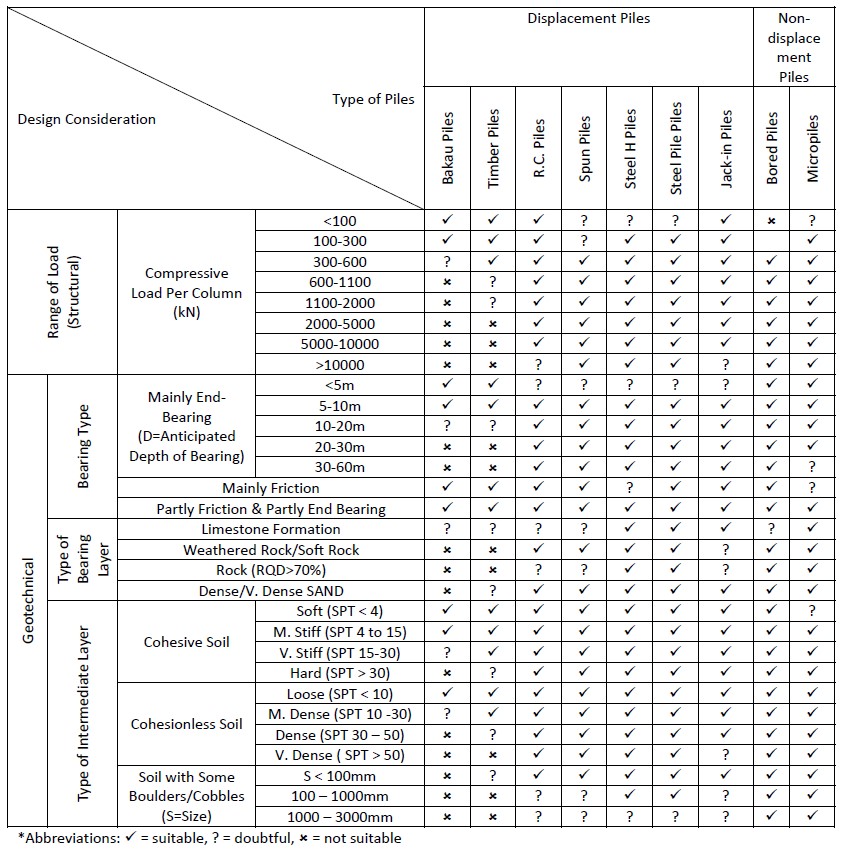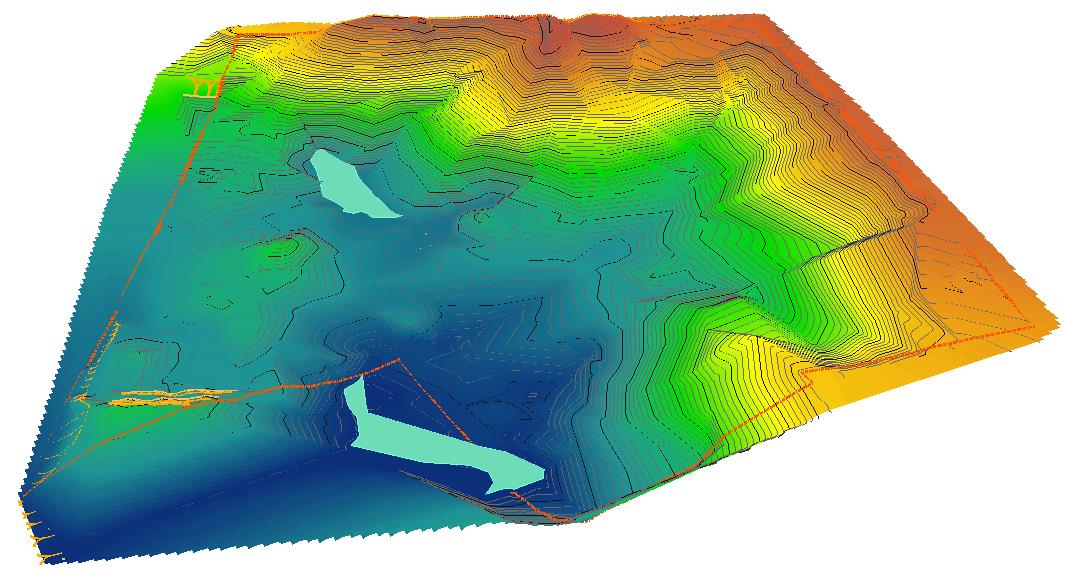Piles are deep foundations, commonly used to transmit loads from the superstructures into the ground. Generally, the term “piles” refer to slender and long structural members or elements installed deep into the subsoil to support structures when there are no suitable and competent subsoil at shallow depth (<3m) or when the site condition renders shallow foundations not practical or too risky.
Broadly, piles can be classified as displacement piles and non-displacement piles, mainly for construction methods and to facilitate design purposes.
Displacement piles causes soil to be displaced when the pile shaft is installed, usually by driving, jacking or vibrating. Examples of displacement piles commonly adopted in Malaysia are precast reinforced concrete piles, prestressed spun piles, timber piles, steel H/pipe piles, etc. It usually involves some ground movement, vibration and noise problems, especially if installed by impact hammers (jacking can avert these problems, but may have problems such as limited penetration depth, relatively slower process, involves heavy machineries, etc.).
Non-displacement piles are generally more environmental friendly since their installation generates less noise and less ground vibration compared to displacement piles and can be constructed through hard obstruction and have a much larger range in size and capacity. Examples of non-displacement piles commonly adopted in Malaysia are bored piles, micropiles, augered piles, hand-dug caissons and barrete piles.

Photo: Example of a Non-displacement Pile – Bored Pile Foundation System
In comparison, displacement piles (especially normal driven precast concrete piles) are generally cheaper and faster in installation if the ground vibrations and disturbance are manageable with adequate mitigative measures. Nevertheless, the cheapest form of piling system is not necessarily the most economical or cost-effective option. Some piling systems have more construction problems such as susceptibility to structural damages, uncertainty of performance, durability problems, etc. These are important considerations when evaluating and selecting a suitable piling system for a project.
Factors that govern the selection of appropriate pile system for a project are subsoil conditions, site/environmental conditions, loading conditions and the economical aspect. The following pile selection chart can provide some guides on the selection of piling system for a project:-

If you have a project which requires professional geotechnical engineering design/inputs/advice, do contact us. We also provide training/workshops to your organization. Click on this link to view the list of topics available.



